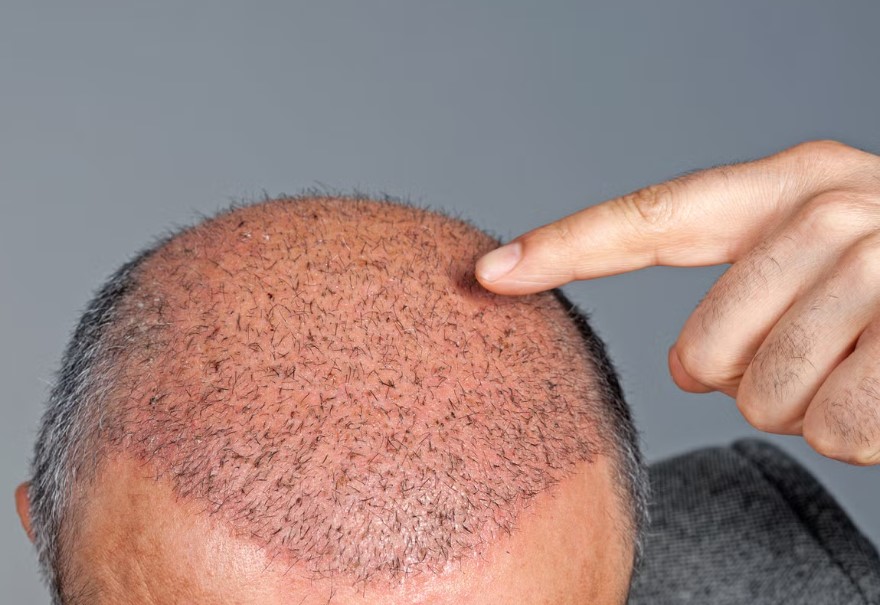Hair loss can be a distressing experience for anyone, impacting self-esteem and confidence. Whether you are dealing with male pattern baldness, receding hairline, thinning hair, or have experienced hair loss due to medical conditions, the decision to get a hair transplant is a significant one. In this article, we will delve into the world of hair transplants, exploring the procedures, benefits, risks, costs, and alternative options available. So, should you get a hair transplant? Let’s find out.
What is a Hair Transplant?
A hair transplant is a surgical procedure that involves moving hair follicles from one part of the body (usually the back or sides of the scalp) to the balding or thinning areas. The goal of a hair transplant is to provide a long-term solution to hair loss by transplanting healthy hair follicles that are genetically resistant to balding to areas where hair has thinned or receded.
Reasons for Considering a Hair Transplant
There are several reasons why someone might consider getting a hair transplant:
- Genetic Hair Loss: If you have a family history of male or female pattern baldness, you are more likely to experience hair loss at some point in your life.
- Receding Hairline: A receding hairline can be a significant source of concern for many individuals, affecting self-confidence and self-image.
- Thinning Hair: Hair thinning can occur due to various factors such as stress, hormones, diet, and medical conditions.
- Medical Conditions: Conditions such as alopecia areata, alopecia totalis, and alopecia universalis can result in significant hair loss.
- Traumatic Hair Loss: Injuries, burns, or surgical procedures can lead to hair loss that may be irreversible without intervention.
- Cosmetic Reasons: Some individuals opt for hair transplants for cosmetic reasons to enhance their appearance and feel more confident.
Types of Hair Transplants
There are two primary types of hair transplants:
- Follicular Unit Transplantation (FUT): Also known as strip harvesting, FUT involves removing a strip of tissue from the donor area and extracting individual hair follicles to transplant into the recipient area.
- Follicular Unit Extraction (FUE): FUE involves extracting individual hair follicles directly from the donor area using a punch tool and transplanting them into the recipient area.
Procedure of a Hair Transplant
The procedure of a hair transplant typically involves the following steps:
- Consultation: The initial consultation with a hair transplant surgeon to evaluate your hair loss, medical history, and suitability for a hair transplant.
- Preparation: Preparing the donor area by trimming the hair and administering local anesthesia to minimize discomfort during the procedure.
- Extraction: Extracting hair follicles from the donor area using FUT or FUE techniques.
- Recipient Site Preparation: Creating tiny incisions in the recipient area to accommodate the transplanted hair follicles.
- Transplantation: Carefully transplanting individual hair follicles into the recipient site at the correct angle and density.
- Post-Operative Care: Providing instructions for post-operative care, including medications, washing instructions, and follow-up appointments.
Ideal Candidates for a Hair Transplant
Not everyone is an ideal candidate for a hair transplant. The ideal candidate for a hair transplant is someone who:
- Has sufficient donor hair for transplantation.
- Is in good overall health with no underlying medical conditions that may affect the healing process.
- Has realistic expectations about the outcome of the procedure.
- Is committed to following pre-operative and post-operative care instructions.
Benefits of Getting a Hair Transplant
There are several benefits to getting a hair transplant:
- Natural-Looking Results: A properly performed hair transplant can provide natural-looking results that blend seamlessly with your existing hair.
- Permanent Solution: Hair transplants offer a permanent solution to hair loss, unlike temporary treatments like medications or topical solutions.
- Improved Self-Confidence: Restoring a full head of hair can significantly improve self-confidence and self-esteem.
- Low Maintenance: Transplanted hair requires no special maintenance and can be styled and groomed like natural hair.
- Cost-Effective: While the initial cost of a hair transplant may be significant, it is a one-time investment compared to ongoing expenses for other treatments.
Risks and Side Effects
Like any surgical procedure, a hair transplant carries certain risks and potential side effects:
- Bleeding: Some bleeding at the donor and recipient sites is normal during and after the procedure.
- Infection: There is a risk of infection at the donor or recipient sites, which can usually be treated with antibiotics.
- Scarring: FUT may leave a linear scar at the donor site, while FUE typically results in tiny dot scars that are less noticeable.
- Shock Loss: Temporary shedding of transplanted hair follicles can occur, but new hair growth usually begins within a few months.
- Unnatural Hair Growth: In some cases, transplanted hair may not grow in the desired direction or angle, requiring adjustments.
- Numbness or Pain: Temporary numbness or pain at the donor or recipient sites is common and typically resolves on its own.
Recovery Process After a Hair Transplant
The recovery process after a hair transplant can vary depending on the individual and the type of procedure performed. Generally, the following timeline can be expected:
- First Few Days: Mild swelling and redness at the donor and recipient sites are common and typically subside within a few days.
- First Week: Patients are advised to avoid strenuous activities, direct sunlight, and excessive touching or scratching of the scalp.
- First Month: Transplanted hair may shed initially, but new hair growth should start to become visible within 3-4 months.
- Six Months: By this time, significant hair growth should be noticeable, with continued improvement over the next 12-18 months.
Cost of a Hair Transplant
The cost of a hair transplant can vary widely based on several factors, including:
- The extent of hair loss and the number of grafts required.
- The type of procedure (FUT tend to be cheaper than FUE).
- The reputation and experience of the hair transplant surgeon.
- The location of the clinic (urban clinics may be more expensive than rural ones). On average, a hair transplant can cost anywhere from $4,000 to $15,000 or more, with additional costs for medications, follow-up appointments, and post-operative care.
Alternative Options to Hair Transplant
If you are unsure about undergoing a hair transplant, there are alternative options to consider:
- Medications: Prescription medications like finasteride and minoxidil can help slow down hair loss and promote hair regrowth.
- Low-Level Laser Therapy (LLLT): LLLT devices such as laser caps or combs can stimulate hair follicles and improve hair growth.
- Platelet-Rich Plasma (PRP) Therapy: PRP injections can promote hair growth by utilizing growth factors in your blood to stimulate hair follicles.
- Scalp Micropigmentation (SMP): SMP is a non-surgical procedure that uses tattooing techniques to create the illusion of a fuller head of hair.
How to Choose a Hair Transplant Surgeon
Choosing the right hair transplant surgeon is crucial for a successful outcome. Consider the following factors when selecting a hair transplant surgeon:
- Experience: Look for a surgeon with extensive experience in performing hair transplants and a track record of successful procedures.
- Credentials: Ensure that the surgeon is board-certified and has the necessary qualifications to perform hair transplant surgeries.
- Before and After Photos: Review before and after photos of previous patients to assess the surgeon’s work and the quality of results.
- Patient Reviews: Read patient reviews and testimonials to gauge the overall satisfaction and experience of previous patients.
Before and After Care Tips for a Hair Transplant
Proper pre-operative and post-operative care is essential for the success of a hair transplant. Here are some tips to follow:
Before the Hair Transplant
- Follow your surgeon’s instructions regarding medications, alcohol consumption, and smoking.
- Avoid taking blood-thinning medications that may increase the risk of bleeding during the procedure.
- Arrange for someone to drive you home after the surgery and assist you with post-operative care.
After the Hair Transplant
- Follow your surgeon’s post-operative care instructions, including prescribed medications and wound care.
- Avoid strenuous activities, direct sunlight, and swimming for at least two weeks post-surgery.
- Attend all follow-up appointments to monitor your progress and address any concerns.
Frequently Asked Questions
How long does it take to see results after a hair transplant?
It typically takes 3-6 months to see initial hair growth after a hair transplant, with full results becoming apparent within 12-18 months.
Is a hair transplant painful?
Local anesthesia is used during the procedure to minimize discomfort, and most patients report little to no pain during the surgery. Some mild pain or soreness may be experienced during the recovery phase.
Are hair transplants permanent?
Hair transplants offer a permanent solution to hair loss as the transplanted hair follicles are genetically resistant to balding and will continue to grow for a lifetime.
Can women get hair transplants?
Yes, women can also benefit from hair transplants to treat hair thinning or hair loss, although the underlying causes may differ from those in men.
What is the success rate of hair transplants?
The success rate of hair transplants is typically high, with most patients achieving satisfactory results and a natural-looking appearance after the procedure.
How long do I need to take off work after a hair transplant?
Most patients can return to work within 3-7 days after a hair transplant, depending on the type of procedure performed and individual recovery speed.
Deciding whether to get a hair transplant is a personal choice that should be made after careful consideration of the benefits, risks, costs, and alternative options available. By understanding the procedures involved, the expected outcomes, and the recovery process, you can make an informed decision about whether a hair transplant is the right solution for your hair loss concerns. Remember, the key to a successful hair transplant lies in choosing a skilled surgeon, following pre-operative and post-operative care instructions diligently, and maintaining realistic expectations about the results. So, should you get a hair transplant? The choice is yours to make.



